Mastering Sheet Metal Cutting Tools: A Comprehensive Guide
Meta Description: Discover everything you need to know about sheet metal cutting tools in this comprehensive guide. Learn about the different types of tools, cutting methods, safety precautions, and maintenance tips to achieve precise and efficient sheet metal cutting.
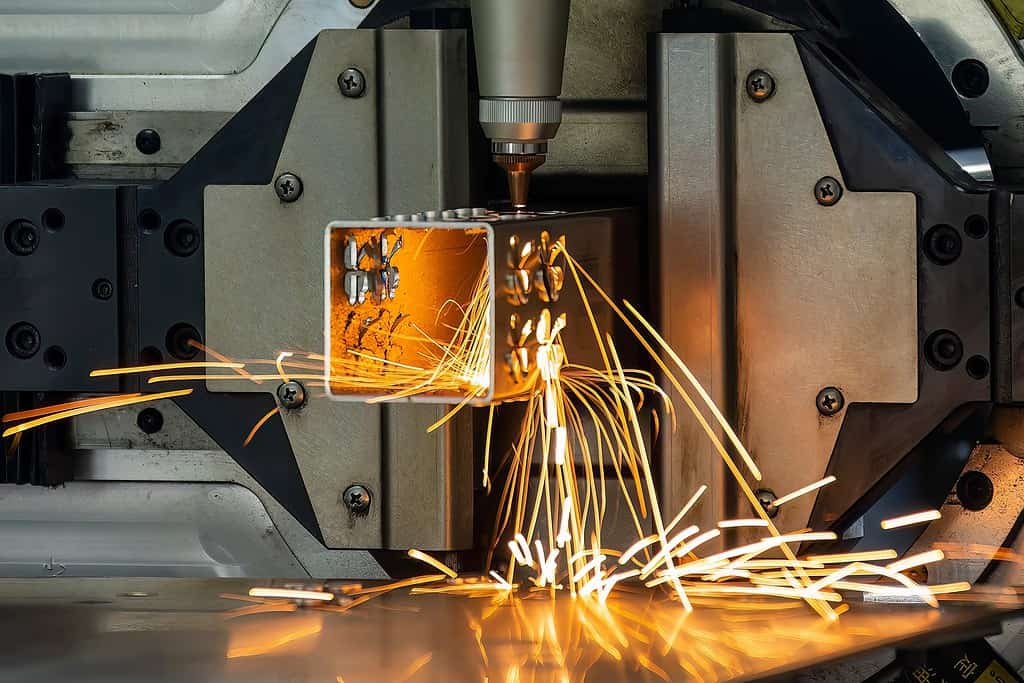
Introduction
Imagine a world without the precision and finesse of sheet metal cutting tools. The sleek lines of your car, the sturdy frame of your refrigerator, and the intricate components of your smartphone—these marvels of modern engineering all owe their existence to the remarkable capabilities of sheet metal cutting. Sheet metal cutting tools are the unsung heroes of various industries, shaping raw metal sheets into the functional and aesthetically pleasing products we rely on daily.
Contents
- 1 Mastering Sheet Metal Cutting Tools: A Comprehensive Guide
- 2 Introduction
- 3 What is sheet metal cutting?
- 4 What is the significance of sheet metal cutting?
- 5 What are the two categories of sheet metal cutting?
- 6 What is the process of sheet metal cutting?
- 7 What are the different types of sheet metal?
- 8 What are the methods of cutting sheet metal?
- 9 What tools are used for cutting sheet metal?
- 10 What hand-cutting tools can be used for sheet metal?
- 11 Nibbler vs Shear; which one is better for cutting sheet metal?
- 12 What type of blade is used to cut sheet metal?
- 13 What is the best way and tool for cutting curves in sheet metal?
- 14 What is the best way and tool for cutting shapes out of sheet metal?
- 15 What are the advantages of using cutting tools over saws to cut metal sheets?
- 16 What are the safety precautions for sheet metal cutting?
- 17 How to clean and maintain sheet metal cutting tools?
- 18 Conclusion
From construction to aerospace, electronics to automotive, the applications of sheet metal cutting are as diverse as the industries themselves. As we delve into this world of precision and craftsmanship, we will explore the importance, versatility, and myriad applications of sheet metal cutting tools.
What is sheet metal cutting?
Sheet metal cutting is the art of transforming flat metal sheets, often unassuming and lifeless, into the intricate and functional components that make up our everyday lives. It’s the fundamental process within the realm of metalworking and manufacturing, distinguished by its ability to transform flat metal sheets into intricate components and precise shapes.

This process, both art and science, plays a pivotal role in the production of a wide array of industrial and consumer goods. It encompasses the artistry of shaping metal into the streamlined bodies of automobiles, the resilient structures of aircraft, and the functional enclosures of electronic devices. In essence, sheet metal cutting is how metal is sculpted and tailored to meet the exacting demands of various industries.
What is the significance of sheet metal cutting?
Sheet metal cutting is a transformative process with far-reaching significance that extends across various industries. This section delves into the multifaceted importance of sheet metal cutting, emphasizing its versatility, precision, and transformative capabilities.
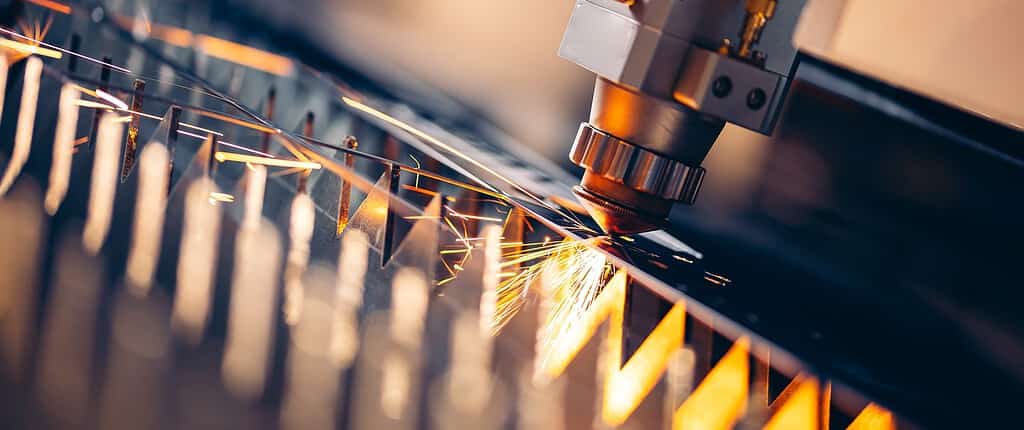
Versatility in Industries: The versatility of sheet metal cutting tools is staggering. These tools are the go-to solution in a multitude of industries, including:
- Automotive: Crafting the body panels and intricate parts of vehicles.
- Aerospace: Building aircraft components that demand precision and durability.
- Electronics: Fabricating housings and enclosures for electronic devices.
- Construction: Creating structural components for buildings and infrastructure.
- Appliances: Shaping the exteriors and internals of household appliances.

Precision and Customization: One of the remarkable aspects of sheet metal cutting is the precision it offers. It allows for the creation of intricate designs and custom shapes with remarkable accuracy. Whether it’s the unique curves of a sports car or the delicate patterns on a decorative metal panel, sheet metal cutting tools make precision a reality.
Material Transformation: Beyond precision, sheet metal cutting tools also possess the power to transform the properties of metals. They can take raw metal sheets and turn them into specialized components with enhanced characteristics. This material transformation opens up new possibilities in engineering and design:
- Corrosion-Resistant Parts: Sheet metal cutting can create components that resist corrosion, making them suitable for outdoor and marine applications.
- Heat-Resistant Components: With the right cutting techniques, metals can be shaped into heat-resistant parts for use in high-temperature environments.
- Electrically Conductive Elements: Precision cuts can turn metals into electrically conductive elements, essential for electrical and electronic applications.
What are the two categories of sheet metal cutting?
Sheet metal cutting, an indispensable process in the world of manufacturing, can be categorized into two fundamental categories: mechanical cutting and thermal cutting. These categories represent distinct approaches to shaping and altering metal sheets, each with its own set of advantages and applications. In this section, we will delve into these two categories, providing a formal and informative overview of their characteristics and significance in the sheet metal cutting industry.
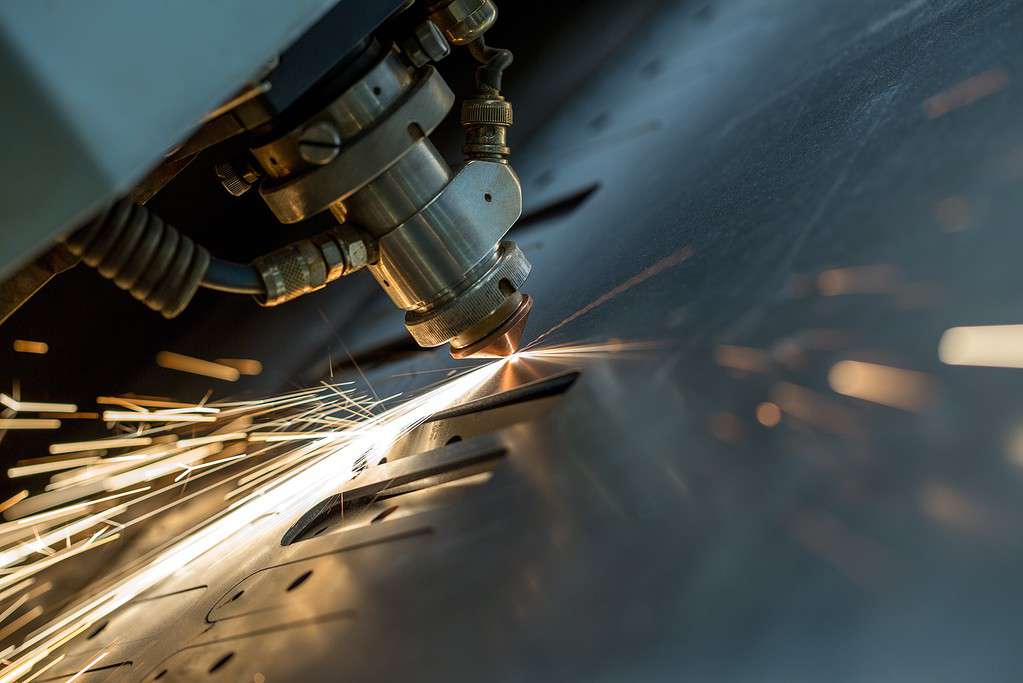
Mechanical Cutting
Mechanical cutting methods rely on the application of physical force to shear or separate metal sheets. This category encompasses various techniques and tools designed to achieve precise cuts through metal. Key aspects of mechanical cutting include:
- Shearing Action: Mechanical cutting tools, such as shears, utilize a shearing action to cut through metal. This action involves the application of force on a designated cutting line, which causes the metal to deform and eventually separate along the cut line.
- Nibbling: Nibblers employ a punching and cutting action, where a punch indents the metal sheet, creating a small incision. The tool then nibbles away at the metal along the cut path, gradually forming the desired shape.
- Snipping: Hand tools like snips and aviation shears employ a scissor-like action to cut through metal. The blades of these tools meet at a specific point, effectively shearing the metal and creating a clean cut.
Thermal Cutting
Thermal cutting methods, in contrast, rely on the application of heat to melt or vaporize metal, creating a separation. These methods are capable of cutting through thicker metals and are often chosen for their speed and efficiency. The key thermal cutting methods include:
- Laser Cutting: Laser cutting employs a high-powered laser beam focused on a specific area of the metal sheet. The intense heat generated by the laser vaporizes or melts the metal along the cutting path. Laser cutting is celebrated for its precision and ability to produce intricate designs with minimal material wastage. It is commonly used in applications requiring fine details, such as custom metalwork or electronic components.
- Plasma Cutting: Plasma cutting utilizes a jet of ionized gas, known as plasma, to melt and remove metal. The high-temperature plasma stream cuts through metal with ease, making it suitable for materials that would be challenging for mechanical cutting methods. Plasma cutting is versatile, capable of handling various metal thicknesses, and is often chosen for its speed and efficiency.
- Oxy-Fuel Cutting: Oxy-fuel cutting employs a mixture of oxygen and a fuel gas, typically acetylene, to create a high-temperature flame. This flame is directed onto the metal, causing it to undergo a chemical reaction and ultimately cutting through the material. Oxy-fuel cutting is effective for thicker metals but may produce wider kerf widths compared to laser or plasma cutting.
Understanding the distinction between mechanical and thermal cutting is pivotal in selecting the most suitable method for a specific sheet metal cutting task.
What is the process of sheet metal cutting?
Sheet metal cutting is a systematic process that demands precision and attention to detail. Here’s a step-by-step breakdown of this intricate art:
- Marking: It all starts with precise marking. The metal sheet is marked with the desired cut lines using markers, scribes, or even specialized marking machines.
- Clamping: To prevent any unwanted movement during cutting, the sheet is securely clamped in place. This ensures that each cut is executed with absolute precision.
- Cutting: The heart of the process is the actual cutting. Sheet metal cutting can be achieved through various methods, including mechanical and thermal approaches. Each method has its own unique characteristics and applications.
- Finishing: After the cut, finishing touches are applied to ensure the final product meets exacting standards. This includes deburring, smoothing edges, and verifying dimensions for accuracy.
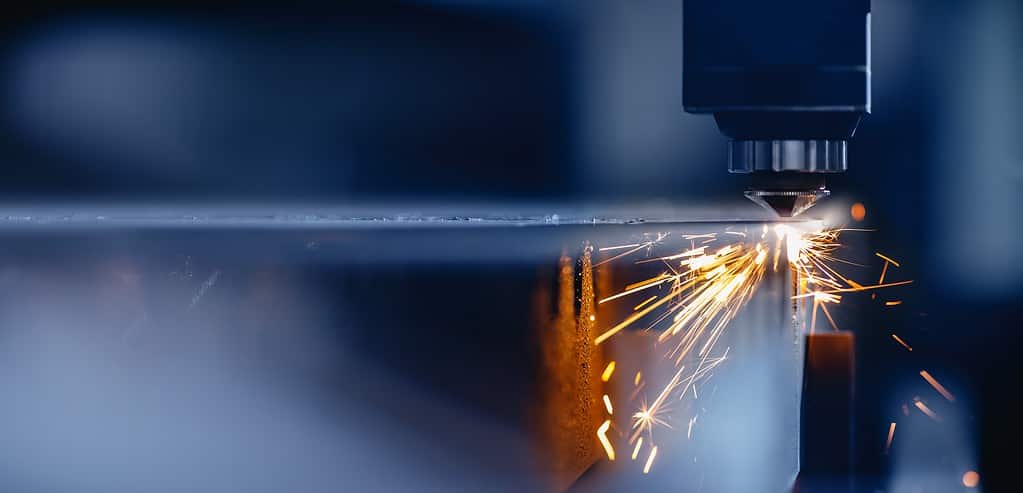
What are the different types of sheet metal?
Sheet metals come in a variety of compositions, each tailored to specific applications. Understanding these types is crucial for selecting the right material for your project:
- Steel: Renowned for its strength and versatility, steel is used in automotive manufacturing, construction, and machinery.
- Aluminum: Lightweight and corrosion-resistant, aluminum is the choice for aerospace, electronics, and packaging.
- Copper: Known for its excellent electrical conductivity, copper is used in electrical and electronic applications.
- Stainless Steel: Resistant to corrosion and staining, stainless steel is prominent in kitchen appliances and medical equipment.
What are the methods of cutting sheet metal?
When it comes to cutting sheet metal, precision and efficiency are paramount. Different methods have emerged to meet varying requirements, offering unique advantages and applications. Let’s explore these methods in more detail:
Laser Cutting
Laser cutting is a high-tech marvel that harnesses the power of focused laser beams to slice through sheet metal with unmatched precision. The laser beam is directed by a computer-controlled system, allowing for intricate designs and complex shapes to be cut with utmost accuracy. Here’s why laser cutting shines:
- Precision: Laser cutting is renowned for its exceptional precision, making it the go-to method for projects that demand intricate detailing.
- Intricate Designs: The versatility of laser cutting enables the creation of intricate designs that would be challenging with other methods.
- Minimal Material Waste: Laser cutting produces minimal waste, optimizing material usage and reducing costs.
- Non-Contact Cutting: Since the laser beam doesn’t physically touch the metal, there’s no risk of tool wear or contamination.
Laser cutting is the choice for industries like aerospace, automotive, and electronics, where precision is non-negotiable.
Plasma Cutting
Plasma cutting is a method that utilizes ionized gas, often referred to as plasma, to melt through metal sheets. The process involves creating an electric arc that superheats the gas, turning it into a plasma jet that cuts through the metal. Here’s why plasma cutting is red-hot:
- Speed and Efficiency: Plasma cutting is known for its speed, making it ideal for thick metals and rapid cutting tasks.
- Versatility: It can handle a wide range of materials and thicknesses, from thin sheets to thick plates.
- Minimal Heat-Affected Zone: Plasma cutting produces less heat-affected zones compared to some other methods, reducing the risk of material distortion.
Plasma cutting is a fiery choice for industries like shipbuilding, construction, and heavy machinery manufacturing.
Waterjet Cutting
Waterjet cutting is a method that relies on high-pressure water mixed with abrasive particles to slice through sheet metal. The abrasive-laden water is propelled through a nozzle, creating a powerful jet that erodes the metal. Here’s why waterjet cutting makes waves:
- Cold Cutting: Waterjet cutting is a cold-cutting method, meaning it doesn’t generate excessive heat. This makes it suitable for materials sensitive to temperature changes.
- Precision: It offers high precision, especially for intricate shapes, and can maintain tight tolerances.
- No Material Limitation: Waterjet cutting can handle a broad spectrum of materials, from metals to ceramics, glass, and composites.
Waterjet cutting finds its niche in industries where material integrity and precision are paramount, such as aerospace, automotive, and artistic metalwork.
Choosing the Right Method
The choice of cutting method depends on several factors, including:
- Material Type: Consider the composition of the sheet metal, as some methods may be better suited for specific materials.
- Thickness: Thicker metals may require methods like plasma cutting, while thinner sheets may benefit from laser cutting.
- Precision Requirements: Evaluate the level of precision needed for your project, as this will heavily influence the method of choice.
Ultimately, the cutting method selection should align with your project’s specific demands, ensuring that you achieve the desired results efficiently and accurately.
What tools are used for cutting sheet metal?
The world of sheet metal cutting tools is a treasure trove of precision and efficiency, each tool uniquely designed to master the art of shaping metal. To achieve the desired results in metalworking, it’s imperative to not only understand these tools but also know when and how to use them effectively. In this section, we’ll explore a range of sheet metal cutting tools, each with its own set of applications and advantages.
Shears: Straight Cuts, No Fuss
Shears are the workhorses of the sheet metal cutting world. These robust tools are designed for fast and efficient straight cuts, making them a staple in metalworking. Whether you’re trimming a piece of sheet metal to size or cutting a precise straight line, shears are your trusted companions. Here’s why they shine:
- Speed: Shears cut through metal sheets swiftly, making them ideal for large-scale, linear cutting tasks.
- Clean Edges: The cuts made by shears are clean and precise, requiring minimal finishing.
- Minimal Material Waste: Shears are known for their efficiency, minimizing material waste, and saving costs.
Nibblers: Precision in Every Curve
When it comes to cutting curves and intricate shapes with utmost precision, nibblers take the spotlight. These specialized tools are designed to excel where precision is paramount. Whether you’re crafting custom automotive body panels or fashioning delicate metal artwork, nibblers are your go-to choice. Here’s why they stand out:
- Intricate Cuts: Nibblers navigate tight corners and intricate shapes effortlessly, allowing for unparalleled precision.
- Control: They provide precise control over the cutting process, ensuring your curves and shapes turn out just as you envision.
- Minimal Distortion: Nibblers produce minimal distortion in the metal, preserving the integrity of the material.
Snips: Mastering Versatility
Snips are the Swiss Army knives of sheet metal cutting. These versatile hand tools offer precision and control for a wide range of cutting tasks. Whether you need to make straight cuts, gentle curves, or intricate shapes, snips have you covered. Here’s why they’re indispensable:
- Versatility: Snips can handle various cutting tasks, making them suitable for a wide range of projects.
- Portability: They are portable and easy to carry, making them convenient for on-site work.
- Precision: Snips provide precision, allowing you to make detailed and accurate cuts.
Aviation Shears: Thin Sheets, No Problem
Aviation shears are designed for cutting thin sheets of metal with ease and accuracy. These specialized tools are perfect for tasks that demand precision in working with thinner metals. Whether you’re crafting intricate jewelry or fine-scale model components, aviation shears deliver. Here’s why they shine:
- Thin Metal Cutting: Aviation shears excel in cutting thin sheets of metal without causing damage or distortion.
- Ease of Use: They are user-friendly, making them suitable for both beginners and experienced metalworkers.
- Accuracy: Aviation shears offer precise control, allowing you to make detailed and accurate cuts.
Choosing the Right Tool
Selecting the right tool from this diverse arsenal of sheet metal cutting tools depends on the specific requirements of your project. Whether it involves straight cuts, curves, or intricate shapes, each tool has its place in the world of metalworking. Understanding the strengths and applications of these tools is key to achieving the desired results efficiently and accurately.
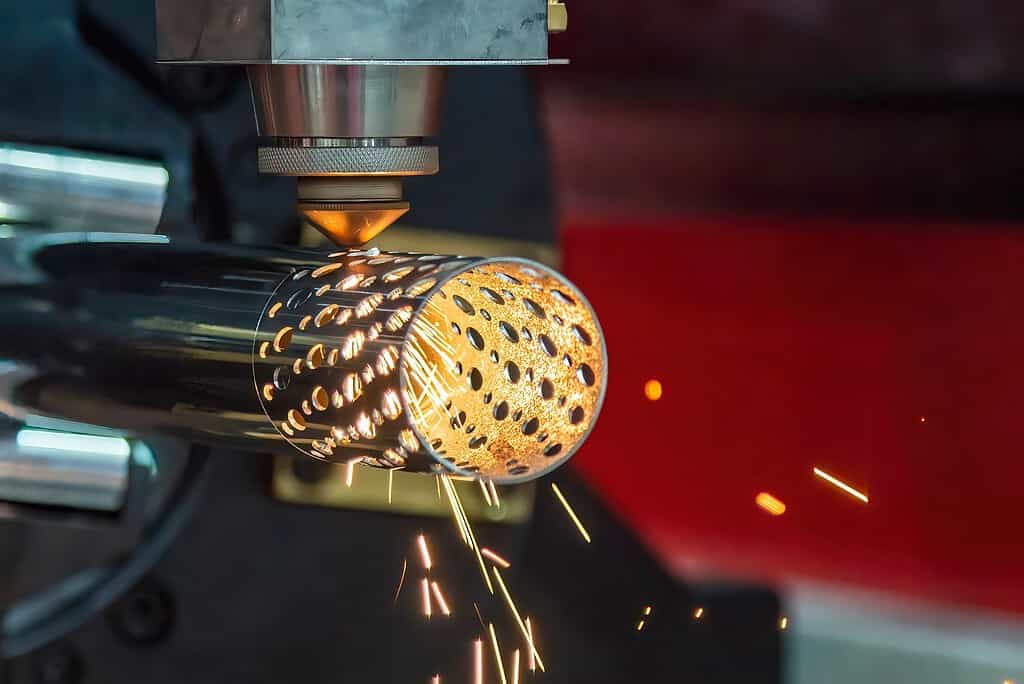
What hand-cutting tools can be used for sheet metal?
When it comes to hands-on precision in sheet metal cutting, the trusty hand-cutting tools step into the spotlight. These tools provide the tactile control and finesse required for specific cutting tasks. Let’s explore these hand tools in more detail:
Snips
Snips are the versatile workhorses for manual sheet metal cutting. They excel in tasks that involve straight lines or gentle curves. Here’s why they’re a staple in the toolkit of many metalworkers:
- Precision: Snips offer precision cutting with minimal effort, allowing for clean and accurate lines on the metal sheet.
- Control: They provide excellent control over the cutting process, making them suitable for delicate or detailed work.
- Versatility: Snips come in various types, including straight-cut, left-cut, and right-cut snips, allowing you to choose the one that suits your specific cutting needs.
- Ease of Use: They are easy to handle and require minimal setup, making them a go-to choice for quick-cutting tasks.
Whether you need to trim a piece of sheet metal to size or create a clean, straight cut, snips are a reliable choice.
Aviation Shears
When the task at hand involves cutting tight curves and corners in sheet metal, aviation shears take center stage. These specialized cutting tools are essential for detailed work that demands precision and maneuverability. Here’s why aviation shears are the tool of choice for such tasks:
- Curves and Corners: Aviation shears are designed to navigate through tight curves and corners with ease, making them ideal for tasks that involve intricate shapes.
- Precision: They provide exceptional precision in cutting, allowing you to follow intricate patterns and achieve the desired results.
- Efficiency: Aviation shears are efficient in cutting, reducing the time and effort required for detailed work compared to other tools.
- Control: They offer excellent control, ensuring that your cuts stay on track even in complex cutting scenarios.
Whether you’re working on an art project that demands precise shapes or crafting intricate components, aviation shears are your trusted companions.
Tin Snips
For making small, precise cuts in sheet metal, tin snips come to the rescue. These specialized cutting tools are designed for delicate work that requires accuracy and finesse. Here’s why tin snips are indispensable for such tasks:
- Small Cuts: Tin snips excel in making small, intricate cuts in sheet metal, allowing you to create detailed shapes and patterns.
- Accuracy: They offer the accuracy needed for tasks where precision is paramount, such as crafting decorative metalwork.
- Lightweight: Tin snips are lightweight and easy to maneuver, ensuring that you can work comfortably even on extended projects.
- Control: They provide excellent control over the cutting process, allowing you to follow the contours of your design with ease.
Whether you’re crafting ornate metal artwork or working on a project that demands intricate cuts, tin snips are your go-to tools for achieving precision and finesse in sheet metal cutting.
Nibbler vs Shear; which one is better for cutting sheet metal?
The age-old debate between nibblers and shears is a common dilemma in the world of sheet metal cutting, and understanding their differences is key to making the right choice for your project. Each tool has its unique strengths and applications, making the decision a crucial one.
- Nibblers: These specialized cutting tools are the artisans of the sheet metal cutting world when it comes to intricate shapes and curves. Nibblers excel at navigating tight corners and cutting along curved lines with remarkable precision. Their ability to create complex shapes is unparalleled, making them indispensable for projects that demand a high degree of detail and finesse. If you’re crafting decorative metalwork, artistic pieces, or components with intricate contours, nibblers are your go-to choice.
- Shears: On the other side of the spectrum, we have shears—a category of cutting tools designed for shear speed and efficiency in straight cuts. Shears are adept at swiftly linearly slicing through metal sheets. They are ideal for large-scale cutting tasks where precision is still important, but the primary focus is on completing the job quickly and efficiently. When you have extensive lengths of straight cuts to make, such as when manufacturing roofing panels or ventilation ducts, shears shine as the preferred tool.
The choice between nibblers and shears ultimately depends on the nature of your project and the level of precision required. Consider the following factors when making your decision:
- Project Complexity: Assess the complexity of your project. If it involves intricate curves, tight corners, and detailed shapes, nibblers are your best bet for achieving precision and artistic expression.
- Cutting Speed: Evaluate the speed at which you need to complete the cutting task. Shears are the faster option for straight cuts and are ideal for projects with a focus on efficiency.
- Material Thickness: Take into account the thickness of the sheet metal you’re working with. Nibblers are versatile but may struggle with thicker materials, while shears are better suited for thicker sheets.
- Level of Expertise: Consider your familiarity with each tool. Nibblers require a steady hand and finesse for complex cuts, while shears are more straightforward to operate.
What type of blade is used to cut sheet metal?
The blade is the heart of any cutting tool. The choice of blade impacts the quality of the cut and the tool’s performance. Some common blade types include:
- High-Speed Steel Blades: Known for durability and longevity, these blades are versatile for various cutting tasks.
- Carbide-Tipped Blades: Deliver precision and prolonged life, making them ideal for demanding applications.
- Diamond Blades: Perfect for cutting hard materials like ceramics, providing precision and durability.
Selecting the right blade is paramount for achieving the desired results in sheet metal cutting.
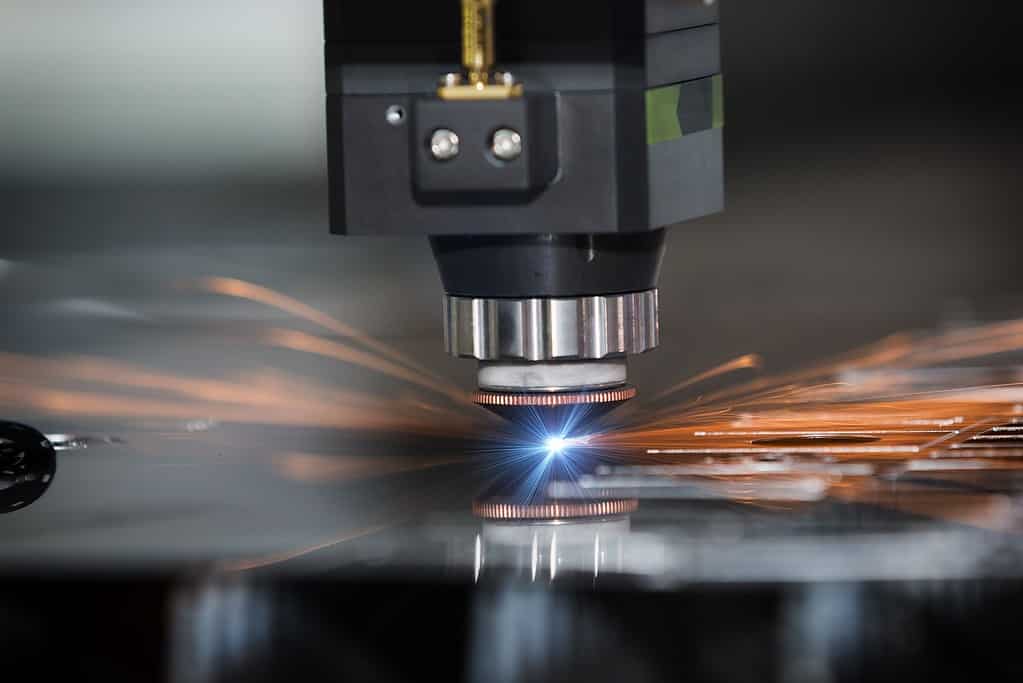
What is the best way and tool for cutting curves in sheet metal?
Sheet metal cutting is a versatile craft that goes far beyond straight lines and sharp angles. When it comes to achieving those elegant curves and intricate shapes, having the right techniques and tools at your disposal is essential.
Nibblers – Ideal for complex curves and shapes, nibblers excel in precision cutting.
When the task at hand involves complex curves and intricate shapes, nibblers take the spotlight. These specialized cutting tools are designed for precision cutting in challenging scenarios. Here’s why nibblers are the go-to choice for such tasks:
- Intricate Designs: Nibblers excel in handling designs that demand intricate details. Whether it’s the graceful curves of decorative metalwork or the complex contours of aircraft components, nibblers offer unmatched precision.
- Navigating Tight Corners: The versatility of nibblers shines when navigating tight corners and sharp angles. Their compact size and maneuverability allow operators to cut with utmost precision, even in confined spaces.
- Minimal Material Loss: Nibblers are known for their minimal material loss. They produce clean, narrow cuts, which means less wasted material and cost savings—a significant advantage in industries where efficiency matters.
- Control and Accuracy: Achieving the desired shape with precision is where nibblers truly shine. Operators have fine control over the cutting process, ensuring that every curve and angle matches the design specifications.
Aviation Shears – Master the art of cutting gentle curves with ease and accuracy.
For projects that involve gentle curves and smooth contours, aviation shears step into the limelight. These versatile tools are masters at cutting sheet metal with ease and accuracy, especially when dealing with curves. Here’s why aviation shears are the tool of choice for such tasks:
- Efficient Curved Cutting: Aviation shears are designed to cut smoothly along gentle curves. Whether you’re crafting rounded edges on metal enclosures or creating curved sections for architectural elements, these shears offer efficiency and precision.
- Ease of Use: One of the standout features of aviation shears is their user-friendliness. They are easy to handle, making them suitable for both professionals and DIY enthusiasts looking to achieve curved cuts without the complexity of other tools.
- Clean Edges: Aviation shears leave clean-cut edges, reducing the need for additional finishing work. The resulting edges are smooth and ready for assembly or further processing, saving time and effort.
- Versatility: While aviation shears excel in cutting curves, they are also versatile enough to handle straight cuts when needed. This adaptability makes them a valuable addition to any toolkit.
What is the best way and tool for cutting shapes out of sheet metal?
When it comes to cutting intricate shapes out of sheet metal, precision and efficiency are paramount. Here are the best methods and tools to achieve exceptional results:
Laser Cutting – Exceptional precision, minimal material waste, and suitability for complex shapes. Laser cutting employs a high-powered laser beam to make precise cuts in sheet metal. Laser cutting is the top choice when intricate, precise shapes are required. Its ability to cut with pinpoint accuracy makes it ideal for industries where precision is non-negotiable, such as aerospace and electronics.
Plasma Cutting – High cutting speeds, versatility across various metals, and ability to handle thick materials. Plasma cutting uses ionized gas to melt through metal sheets. Plasma cutting is perfect for shaping sheet metal when speed is a priority. Its versatility and ability to handle different metal types make it a go-to choice in industries like automotive manufacturing.
What are the advantages of using cutting tools over saws to cut metal sheets?
While saws have their place, cutting tools offer several distinct advantages when it comes to cutting metal sheets. Here are the key benefits:
- Speed:
- Cutting tools are significantly faster than saws, making them ideal for large-scale production. In industries where time is money, cutting tools ensure efficiency and reduce production time. Whether it’s mass-producing automotive components or meeting tight construction deadlines, cutting tools excel in speed.
- Precision:
- Cutting tools provide precise, clean cuts, minimizing the need for post-cutting finishing. The accuracy of cutting tools is unmatched, ensuring that each cut meets exact specifications. This precision is vital in industries where components must fit together flawlessly, such as electronics and aerospace.
- Material Preservation:
- Cutting tools generate minimal waste compared to saws, optimizing material usage. In a world increasingly focused on sustainability, cutting tools help reduce material waste, making them environmentally friendly choices. This benefit extends to industries where materials are expensive or in limited supply.
What are the safety precautions for sheet metal cutting?
Safety is a non-negotiable aspect of sheet metal cutting. Here are the essential safety precautions:
- Safety Glasses: Always wear safety glasses to protect your eyes from flying debris.
- Ear Protection: Use ear protection to guard against noise pollution from cutting tools.
- Gloves: Wear gloves to shield your hands from sharp edges and hot surfaces.
- Ventilation: Ensure proper ventilation, especially when using thermal cutting methods, to avoid inhaling harmful fumes.
How to clean and maintain sheet metal cutting tools?
Proper maintenance ensures your sheet metal cutting tools perform optimally and safely. Here’s how to keep them in top shape:
- Regular Cleaning: Remove debris and metal shavings from the tools to prevent interference with cutting.
- Blade Lubrication: Keep blades sharp and rust-free by applying appropriate lubricants.
- Inspect and Replace Parts: Regularly inspect your tools for wear and tear, and promptly replace any worn or damaged parts.
By following these maintenance guidelines, you not only extend the lifespan of your cutting tools but also ensure the safety of your team during operations.
Conclusion
Sheet metal cutting tools are the backbone of various industries, playing a pivotal role in shaping metal sheets into functional marvels that power our modern world. Whether it’s the sleek lines of an automobile, the intricate components of electronics, or the resilient structures of aircraft, sheet metal cutting is at the heart of it all. To achieve precision and efficiency in this craft, it’s essential to have a deep understanding of the methods, tools, safety measures, and maintenance practices involved. By mastering these aspects, manufacturers can continue to innovate and create the products that define our daily lives.
